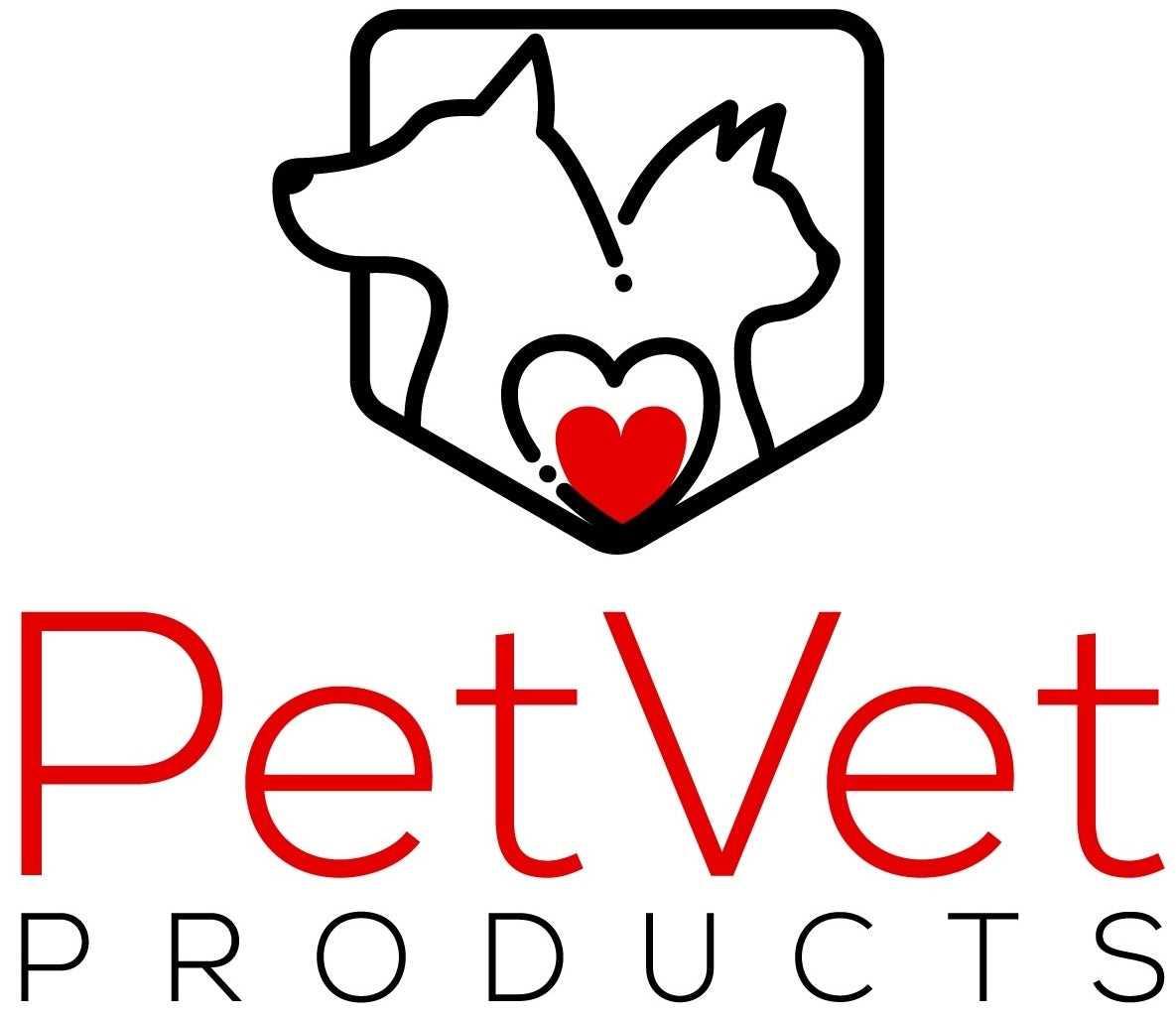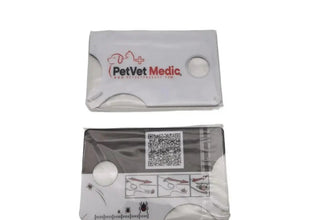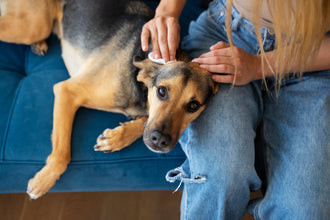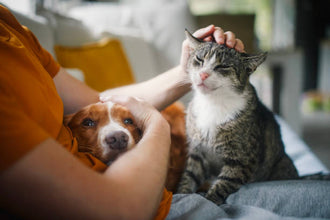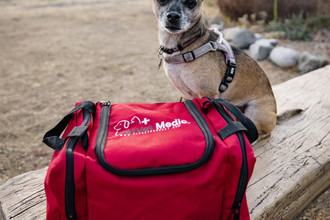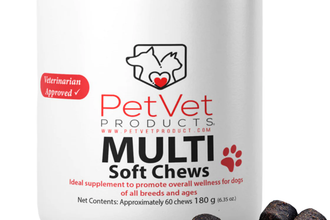
At Pet Vet Products, we know your furry friend means the world to you. That’s why we’re dedicated to helping you keep them safe and healthy, no matter what comes their way. Whether it’s a minor scrape or an emergency, having a well-stocked first aid kit pet owners can rely on is essential.
In this guide, we’ll walk you through everything you need to know about dog first aid kits—what to include, how to use each item, and why being prepared can make all the difference.
Why Every Dog Owner Needs a First Aid Kit?
Accidents happen, and when they do, being prepared can save your dog’s life. A good first aid kit pet owners trust isn’t just a collection of supplies—it’s a lifeline in emergencies. From cuts and scrapes to allergic reactions, having the right tools on hand can help you stabilize your pet before you reach the vet.
Essential Items for Your Dog’s First Aid Kit
1. Basic Tools for Handling Injuries
-
Tweezers: Tweezers are useful for safely removing splinters, thorns, or ticks from your pet’s skin. They help extract foreign objects without causing further irritation or injury. When removing ticks, grip them close to the skin and pull steadily to avoid leaving parts behind.
-
Scissors with Blunt Ends: Blunt-ended scissors are ideal for safely cutting bandages or trimming fur around wounds. The rounded tips prevent accidental cuts while working on sensitive areas. They help remove matted fur near injuries and make bandage application easier.
-
Thermometer: A pet-specific thermometer helps monitor your pet’s body temperature for signs of fever. Dogs have a normal temperature between 101°F and 102.5°F, so any deviation may indicate illness. A rectal thermometer provides the most accurate reading.

-
Syringes: Syringes help give liquid medication or flush wounds with sterile saline. They ensure precise dosing of medicine and help keep wounds clean. Always use a clean syringe to prevent infection and ensure your pet’s safety.
2. Wound Care Supplies
-
Antibiotic Ointment: Antibiotic ointment helps prevent infection in minor cuts by creating a protective barrier. It reduces the risk of bacterial growth and speeds up healing. Applying a thin layer can keep wounds moist and shield them from contaminants. Always use pet-safe ointments to avoid harmful ingredients.
-
Antiseptic Solution: An antiseptic solution cleans wounds safely to prevent bacteria buildup and infections. It helps disinfect cuts, scrapes, and bites without irritating the skin. Using an antiseptic ensures proper hygiene and reduces the risk of complications. Choose a pet-friendly formula to avoid stinging or discomfort.
-
Bandages & Tape: Non-stick gauze and self-adhesive wrap are ideal for covering pet wounds. They protect while allowing flexibility and comfort during movement. Bandages help prevent licking and exposure to dirt, reducing the risk of infection. Always ensure a snug but not too tight fit for proper circulation.
-
Cotton Balls: Cotton balls are great for applying ointments or gently cleaning wounds. They help absorb excess fluid, keeping the affected area dry and clean. Soft and non-irritating, they allow for careful wound care without causing discomfort. Always use fresh cotton balls to avoid cross-contamination.
-
Saline Solution: Saline solution flushes out dirt and debris from eyes or wounds without irritation. It’s a gentle and safe option for cleaning sensitive areas effectively. Saline can be used to rinse foreign particles from a pet’s eyes or cleanse minor wounds. Make sure to use a sterile solution for best results.
3. Emergency Extras
-
Muzzle: Even the friendliest dogs may bite when they are in pain or distress. A muzzle ensures safety for both the pet and the person providing first aid. It prevents sudden bites while allowing necessary treatment to be given. Always use a properly fitted muzzle to avoid discomfort or breathing issues.
-
Benadryl (with Vet Approval): Benadryl can help manage allergic reactions such as itching, swelling, or hives. However, it should only be given with a vet’s approval to ensure safety. The correct dosage is crucial, as too much can cause harmful side effects. Always consult your vet before administering any medication to your pet.
-
Ice Pack: An ice pack helps reduce swelling, pain, and inflammation from sprains, bruises, or insect bites. It should always be wrapped in a cloth to prevent frostbite or skin irritation. Applying it for short intervals can provide relief and prevent further injury. Avoid prolonged use, as excessive cold can harm the skin.
-
Medical Gloves: Wearing medical gloves protects both you and your pet while treating wounds. They prevent bacteria from entering the wound and reduce the risk of infection. Gloves also keep your hands clean when handling blood or bodily fluids. Always use disposable gloves and change them between hygiene treatments.
4. First Aid Guides & Reference Materials
Pet first aid charts and guides are a must-have. In stressful moments, step-by-step instructions can help you stay calm and take the right action.
Additional Pet Care Products to Consider
While a first aid kit covers emergencies, everyday pet care products can help maintain your dog’s health. Consider adding:
-
Dog vitamin supplements to support joint health, digestion, and immunity.
-
A pet emergency contact list (vet, poison control, nearby animal hospitals).
How to Use Your Dog’s First Aid Kit
Having supplies is one thing—knowing how to use them is another. Here’s a quick rundown:
-
For Cuts: Clean the wound with saline, apply antiseptic, and cover it with a bandage. This helps prevent infection and promotes faster healing.
-
For Burns or Swelling: Use an ice pack wrapped in a cloth to reduce swelling and pain. Avoid direct contact with ice to prevent frostbite.
-
For Allergic Reactions: Administer Benadryl only if your vet has approved the dosage. It helps reduce itching, swelling, and other allergic symptoms.
Always monitor your dog after administering first aid and call your vet if symptoms worsen.
Final Thoughts: Be Prepared, Stay Calm
No one wants to think about their dog getting hurt, but accidents happen. A well-prepared first aid kit that pet owners can rely on gives them peace of mind and could save their dog’s life.
At Pet Vet Products, we’re here to help you keep your pets safe with high-quality supplies and expert advice. Check out our selection of pet first aid kits, charts, and guides, along with essential pet care products and dog vitamin supplements to keep your furry friend in top shape.
Be Ready for Anything—Stock Up Today!
Visit us to build your dog’s first aid kit and ensure you’re prepared for any emergency. Your pet’s health is worth it!
